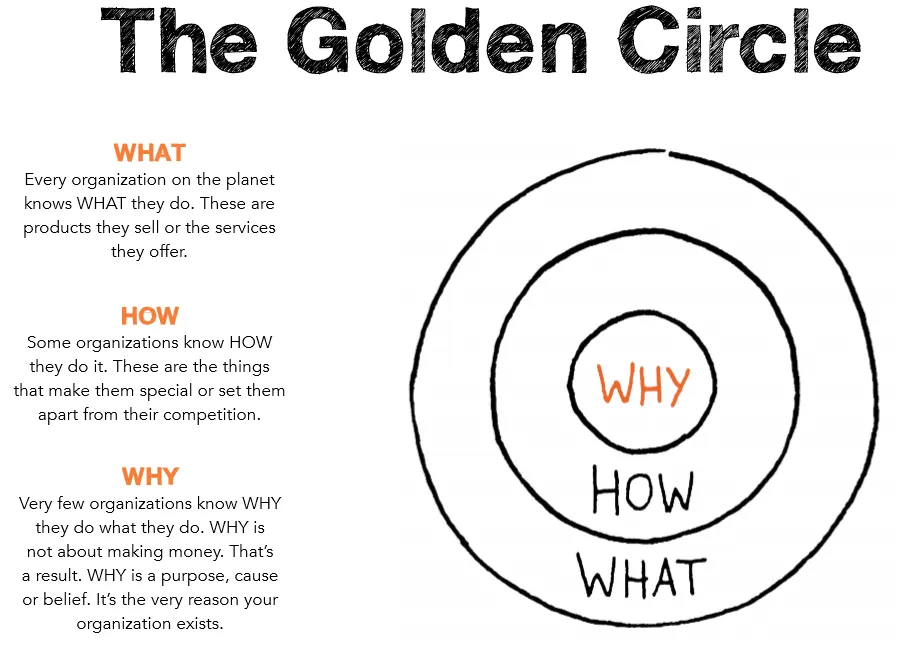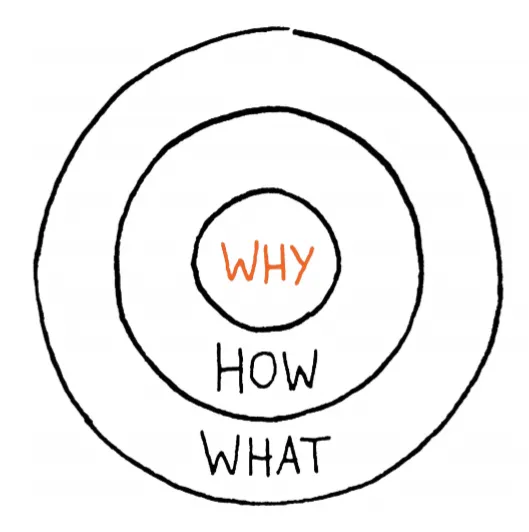Startups and marketing
When I heard marketing professionals giving advice, it never fully made sense to me. Until a couple days ago, when it finally clicked.
An important distinction is the state of the company. As an indie developer I was looking at marketing from the point of view of a new product (getting first users), and marketers work through the lens of established businesses. They assume that the target audience, the ideal customer, is known. But in early stage products this is usually unclear.
What comes up most often in “marketing for beginners” lessons and advice is knowing the target audience, the ideal customer profile, defining a brand, having a vision and mission, and knowing the how and why of the golden circle of Simon Sinek.

Marketing is always talked about as one pillar of a product company. I assumed that it’s just something one has to do to get the business going.
It is a lot though, and can feel overwhelming. Especially for founders who have never done anything like it before.
In the early days understanding of the required information changes quickly as you expand your knowledge of the market. At that stage it’s not yet clear what the best market for the product is, and part of the fun (and challenge) is to figure that out.
That’s why this way of marketing is not for new product companies.
It was important for me to understand that even beginner courses are for marketers working in established companies. Marketing in small or new companies is an entirely different discipline.
A product still needs users though. If it’s not marketing, what do I call it? I decided that in the early phase I simply think of it as “user acquisition”. No marketing, no fancy marketing strategy, just plain and simple user acquisition.
This is the core message I want to get across. It’s not necessary to define the ideal customer profile, mission, vision, and whatever else in the beginning. Just do whatever works to get users and worry about the rest later.
Once the product acquired an initial set of customers work from there. Find out which group of users gets the most value from the product, define the ideal customer from that, and then get to product market fit.
Marketing
Marketing professionals threw around terms that didn’t quite make sense in my engineering mind.
It’s all about perspective of course. The marketing lens is different from the engineering lens, which is different from the product lens, and so forth. Understanding these different perspectives is a (communication) superpower.
Today I’m an engineer and indie developer looking through the marketing lens.

For the purpose of this article I split marketing into three areas.
- Advertising
- Product marketing
- Brand building
What I mean with product marketing are actions that should bring users directly to the product. An obvious way is creating content which explains the benefits and features of the product.
I’ll focus on brand building, as this is where my confusion came from. The other two are quite straightforward, easier to understand in their purpose and operations. Doesn’t mean that it’s easy to do though.
Brand building is about communicating what the company cares about. Their values, the vision and mission, the why, how and what. It is the baseline for the brand.

Communicating it effectively is the job of marketing. What was crucial for me to understand is that it is more than just explaining what the mission is for example. It’s also about going beyond the product.
Let’s assume the mission of a fictional company is to reduce carbon emissions to zero. Their product analyzes computing infrastructure, shows the impact it has on emissions, and suggests improvements. A marketing action can be to create ads and put them on specific keywords in Google.
Going beyond the product can be to write an article about how companies can reduce their carbon footprint with their travel policy. This article also works toward the mission. Such actions build a brand. This one communicates that the company cares about reducing carbon emissions, not only their product.
Conclusion
I believe it’s important to form a good mental model about all aspects of product business building to be able to have repeatable success. It helps set the right actions and avoid unnecessary ones.
Trying to do things the way they’re supposed to be done is the perfectionist’s curse. If you never tried to ‘do it properly’ and just did what works, be happy about it, I envy you.
For me it was an important step to understand that most of the information marketing courses tell you to get is not necessary to get first customers.
It all seems quite obvious when I write it down like that, and I feel a bit stupid for not getting there earlier. But now that I know, I can put marketing advice better into context.
